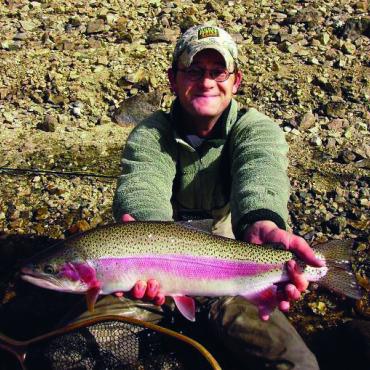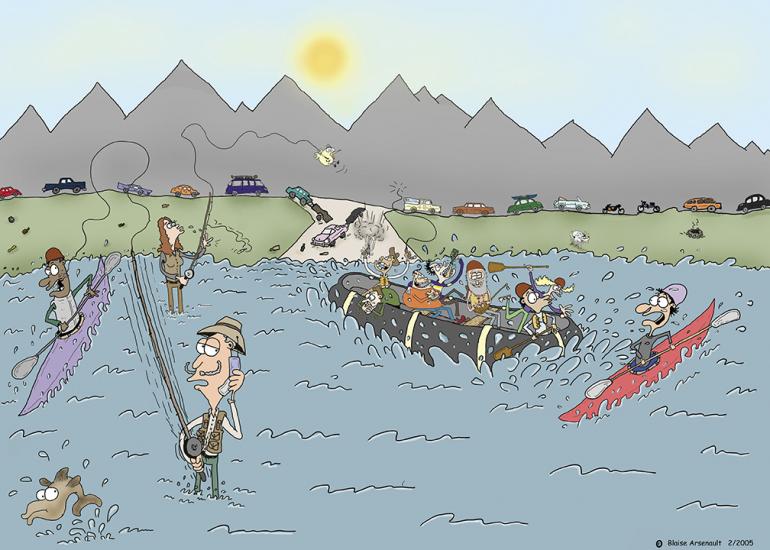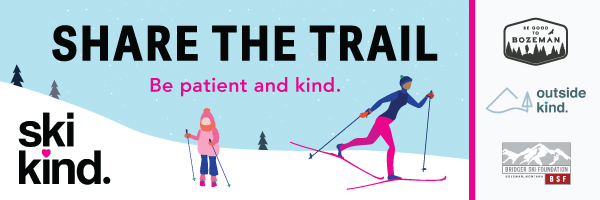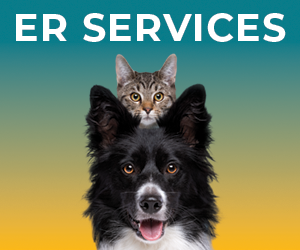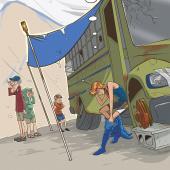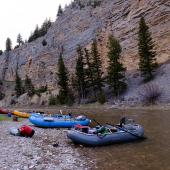Put-In Etiquette
Following the rules of the river.
Montana’s many rivers offer some of the best opportunities for scenic, accessible recreation in the state. That being said, the general consensus among frequent river-users and guides is that these waterways are becoming increasingly crowded. Spend enough time near various access spots during the heat of the summer and you’re bound to see a vast assortment of flagrant resource abuse, as well as downright poor manners.
Public accesses are just that, open to the public—which means every Joe and Jane Six-Pack and their loud children and barking mongrels have the right to use these places. Couple this fact with a rumor of good fishing, good rapids, hot weather, or any of the various draws to a river and the stage is set for conflict. Case in point: the Big Horn County Sheriff’s office responds to river user conflicts at least once a year.
In the spring of 1994 the Fisheries Division of Montana Fish, Wildlife & Parks formed a multi-member committee in response to river users’ complaints and reports of increasingly unsatisfactory experiences on Montana’s waterways. This committee was comprised of individuals from various resource interest groups, management agencies, and conservation organizations. Their findings indicated that through the implementation of a few etiquette guidelines, as well as informing and educating the public, the chances of conflict could in fact be reduced—therefore increasing the quality of the river experience for all users.
These guidelines are amazingly simple and are basically a mixture of good manners, common sense, and good sportsmanship, as well as basic and necessary conservation measures.
Boaters
When using a boat launch, every type of boat should be ready and the floating party organized before approaching the actual site. Rafts should be inflated, frames assembled and ready, and most of the gear loaded into the raft before moving to the river’s edge. Tubers should also follow this rule of pre-inflation. Canoeists and kayakers should have all of their lighter gear loaded and secure before approaching the launch area. Driftboaters should have everything loaded and ready well before approaching the ramp. Fishing rods should be rigged and unrigged well away from the ramp. Once in the water the ramp area should be cleared for other parties as soon as possible. Always look out for wading anglers and other watercraft and give them as wide a berth as possible. Avoid floating through other anglers’ fishing lanes; if this is unavoidable, at least make eye contact with the angler and apologize. If kayakers and canoeists are “playing the river” in a section of rapids at or near a launch point, they should yield to through-boaters and those trying to get underway.
Anglers
Anglers should be aware that designated launch and access points are busy places and should plan accordingly or avoid these spots altogether. Understand that in many instances floaters have no choice but to float through a fishing hole because that is the only accessible section of water. Respect private property—many access points are adjacent to private ground. If unsure of land ownership, refer to the fishing regulations or other sources before hopping the fence.
All Users
Dogs should always be on a leash or otherwise under control and within the owner’s sight. Try to keep floating parties small; large groups can be annoying and intimidating to other users. If an access is crowded, move to a different location as this will minimize crowding and congestion. Keep noise to a minimum—radios should be turned off and voices kept at regular speaking level. If you pack it in, be sure to pack it out. Leader packages, cigarette butts, nightcrawler cartons, and any other garbage is not to be deposited in the stream or on the bank.
Guides
Be self-policing and pass etiquette on to your clients. Be firm; after all, your living depends on the condition of these rivers. Carry spare garbage bags and pick up any litter you may find at ramps and lunch spots. Maintain a courteous and professional attitude and be helpful to other users when necessary.
When using river access points this spring, keep these simple guidelines in mind and politely pass them on to others. Put-in and takeout places are essential parts of any float; leaving them in good condition will improve the quality of any Montana river experience. For more information on float regulations and river etiquette, go to fwp.mt.gov/activities/boating/river-ethics.

